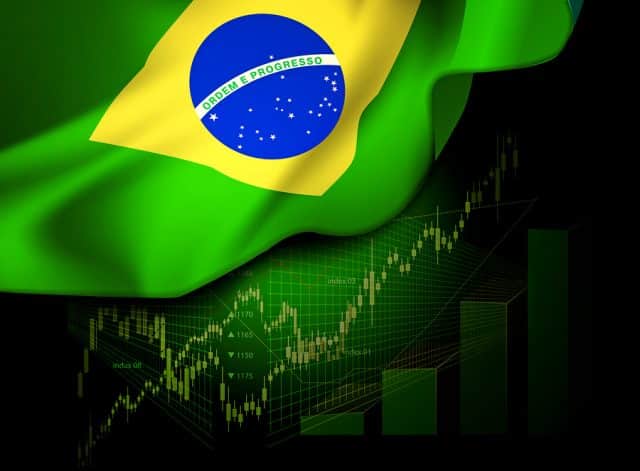In May of this year Brazil’s retail stock took a nose dive dropping 9% in one month. This was a .4% decrease from April 2016. Compared to a 10.2% decrease since May of 2015 it doesn’t seem too bad. There has been no short of problems for Brazil in 2016. The government was overthrown, the Rio Olympics are a disaster to say the least with most of the construction not yet completed, Zika is a continued threat to public health and a potential pandemic thanks to the Olympics, the police force hasn’t been paid in months, the fire brigade is in the same boat as the police and the largest economy in South America is currently going through its longest and worst recession in decades. “Inflation is currently 9.32% annualized. Brazil needs inflation to collapse to 8% in order to really cut interest rates, currently the most onerous in the BRIC countries (Rapoza for Forbes, 2016).”
The debt the country takes on is an important aspect of economic strategy in Brazil. The country is still deeply divided along income lines, with poorer states in the north in need of government assistance such as subsidized health insurance and pension benefits for the elderly which are currently indexed to inflation and to minimum wage increases (Rapoza for Forbes, 2016). It would be highly unpopular to cut those programs at this time. But cuts will have to be made elsewhere. If current trends continue, Brazil’s debt burden could be viewed as unsustainable by the markets. The country’s credit rating is already junk. “It was stripped of its hard-earned investment grade status last year (Rapoza for Forbes, 2016).”
“The sudden retreat in consumer demand reflects possible cracks in Brazil’s retail and service sectors, crucial pillars of an economy that has been buoyed in recent years by its growing consumer class (Reuters, 2016).” As investment and industrial output slows, President Dilma Rousseff has bet big that sustained consumer demand would help avoid recession. The country’s economy has all but stalled in recent quarters. “But Brazilian households are struggling with record debt levels. If they keep up their newfound thrift, it could weigh further on an economy already expected by the central bank and independent analysts to barely surpass 2 percent growth in 2012 (Reuters, 2016).” The retail slowdown may also add momentum to a string of aggressive interest rate cuts. The central bank is expected to reduce its benchmark rate to a record low of 8 percent later on Wednesday.
Hope for the future of private retail sales are not very optimistic. With most of the country’s population in the North in poverty and even people with employment; for instance employees of governmental institutions not receiving their paycheques not many Brazilians have the disposable income for retail. Retail includes cars, construction materials, clothes, cosmetics, tobacco, alcohol and much more. Brazil’s 12-month consumer inflation runs at 8.8 percent while the country’s benchmark interest rate remains at a 10-year high, at the same time eating into Brazilians purchasing power and limiting their ability to finance the purchases of goods. The economy is expected to contract for a second straight year before resuming growth in 2017 (Bloomberg, 2016).
Six of the eight sector sales tested between April and May dropped. However, sales may start recovering by the end of the year after bottoming out in the third quarter. Brazil is currently anticipating the Rio Olympics – hopefully the influx of tourism gives the retail economy the boost it needs, because unfortunately Brazilians can’t afford it.










